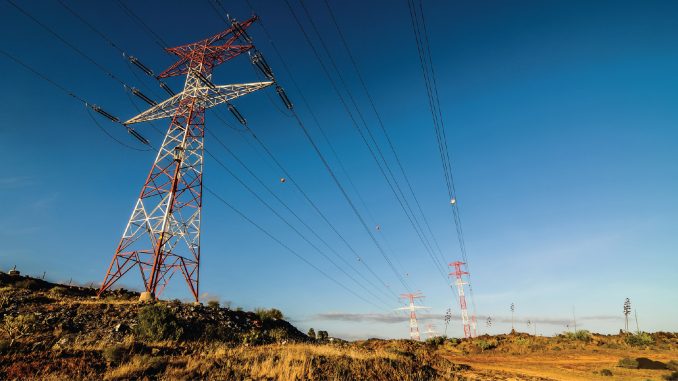
In a key development towards the introduction of general network access (GNA) for interstate transmission planning, the Central Electricity Regulatory Commission (CERC) has recently issued the draft Connectivity and GNA to the Inter-State Transmission System Regulations, 2021. The regulations provide a regulatory framework to facilitate non-discriminatory open access to licensees/ generating companies/consumers for use of the interstate transmission system (ISTS) through GNA. The regulations outline the eligibility for grant of GNA, applicability of temporary GNA, and guidelines for allocation of transmission corridors, among other things.
A look at the key highlights of the draft Connectivity and GNA to the Inter-State Transmission System Regulations, 2021…
Connectivity to the ISTS: The entities eligible to apply for grant of connectivity or its enhancement include generating stations (including renewable energy generators), captive power plants, standalone energy storage systems (ESSs) that have an installed capacity of 50 MW and above, renewable energy park developers, and renewable energy generators/stand-alone ESS with an installed capacity of 5 MW and above. The entities with connectivity shall be eligible to apply for enhancement of connectivity of less than 50 MW subject to available capacity in the transmission system.
Upon receiving an application for grant of connectivity, the nodal agency will carry out an interconnection study as per the Central Electricity Authority Technical Standards for connectivity,
along with any requirements to augment the existing ISTS. Any augmentation required for the existing ISTS will be considered as an associated transmission system (ATS) for the applicants. In case the nodal agency determines that ATS is required, it shall intimate in-principle grant of connectivity to the applicant within 60 days from the last day of the month in which the application is received. In case ATS is not required, the nodal agency shall intimate in-principle grant of connectivity to the applicant within 30 days from the last day of the month in which the application is received. The applicant will be required to submit a connectivity bank guarantee in three parts. Within 15 days of receipt of the final two parts of the bank guarantee, the nodal agency will intimate the final grant of connectivity to the entity that has been intimated in-principle grant of connectivity.
In the case of grant of connectivity to a generating station or a captive generating project, or a stand-alone ESS, dedicated transmission lines will be established, operated and maintained by such entities. Meanwhile, for a renewable power park developer, the dedicated transmission lines will be developed, owned and operated by the developer.
Eligibility for GNA: The eligible entities for grant of GNA include the state transmission utility (STU) on behalf of distribution licensees connected to intra-state transmission system and other intra-state entities; a buying entity connected to the intra-state transmission system; a distribution licensee or a bulk consumer seeking to connect to the ISTS, directly, with a load of 50 MW and above; trading licensees engaged in cross-border trade of electricity; and a transmission licensee connected to the ISTS for drawal of auxiliary power.
Grant of GNA: Within three months of enforcement of the regulations, the STU may, on behalf of intra-state entities, apply for additional GNA over and above the GNA deemed to have been granted. For grant of additional GNA to the STU, the nodal agency will process all applications received within two months from the last day of receipt of applications and grant additional GNA based on available transmission capacity, or on pro-rata basis, if necessary. A GNA once granted shall remain valid until relinquished. Meanwhile, for grant of GNA to entities other than the STU, given connectivity to the ISTS, they will be deemed to have been granted GNA, equal to the quantum of connectivity from the start date. A buying entity connected to the ISTS and trading licensees engaged in cross-border trade of electricity will be granted GNA by the end of the month after the month in which an application, complete in all respects, is received (where GNA is granted on the existing system) or within 180 days from the end of the month in which the application is received (where augmentation of the transmission system is required).
Temporary GNA: The draft regulations state that a distribution licensee or bulk consumer directly connected to the ISTS, a buying entity connected to the intra-state transmission system; a generating station, including renewable energy generating stations, seeking to meet its auxiliary consumption or start-up power or supply obligations; captive generating plants, stand-alone ESSs; trading licensees and power exchanges will be eligible for grant of temporary GNA (T-GNA). The T-GNA applications shall be made and processed through a single-window electronic platform, the National Open Access Registry.
A GNA grantee also shall be eligible to apply for T-GNA over and above the GNA granted to it. A GNA grantee shall be eligible to schedule power within the GNA granted to it under any contract, subject to conditions specified in the grid code.
The National Load Despatch Centre or the nodal regional load despatch centre (RLDC) should convey the grant of T-GNA to the applicant as per the timelines stipulated in the regulations. The transmission charge rate for T-GNA for a state, per MW per time block, should be published for each month by the implementing agency. In the case of bilateral and collective transactions, the transmission charges for T-GNA should be payable only at the point of drawal, as per the last published transmission charge rate for the state where such point of drawal is located.
Allocation of transmission corridor under GNA and T-GNA: As per the draft regulation, a GNA grantee will be eligible to schedule power within the GNA granted to it under any contract, subject to conditions specified in the grid code. However, in case of constraints in the transmission system, the available transmission corridor will be allocated to the GNA grantees in proportion to their GNA within the region or from outside. Similarly, a T-GNA grantee under the advance application category will be eligible to schedule power; however, in case the day-ahead scheduling request of T-GNA grantees for full quantum of T-GNA cannot be accommodated due to non-availability of a transmission corridor, scheduling will be done on a pro rata basis in proportion to their T-GNA. Once the day-ahead schedule is finalised for the GNA grantees, the schedule for T-GNA grantees under the advance application category of T-GNA would be finalised over the balance transmission corridor.
Curtailment: In case of transmission constraints or in the interest of grid security, the RLDC may curtail the already scheduled transactions. If this happens, transactions under T-GNA shall be curtailed first, followed by transactions under GNA. Within T-GNA, bilateral transactions shall be curtailed first, followed by collective transactions under the day-ahead market, followed by collective transactions under the real-time market. The curtailment shall be on a pro rata basis, based on the proportion of T-GNA/GNA.
Overall, GNA would essentially overhaul the process of transmission system planning by giving power sector constituents easier access to the transmission network across the country. The move is aimed at ensuring adequate development of the transmission system, especially in the wake of increasing renewable energy penetration. Going forward, the CERC’s regulations on connectivity and grant of GNA are expected to serve as the much-required regulatory framework for GNA implementation in the country.



